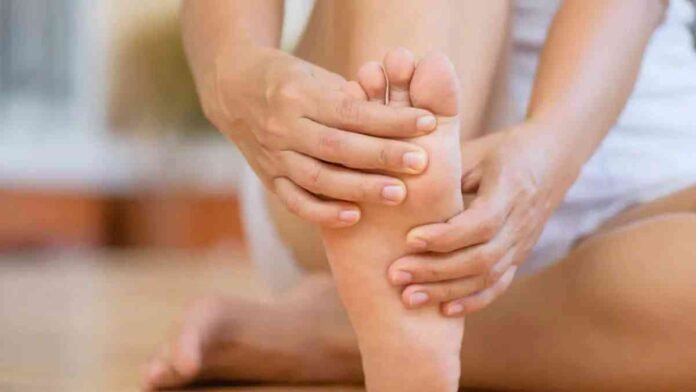Because of the increased risk of diseases associated to the feet during the monsoon season, it can be a very worrying period for diabetics. However, you can keep your feet secure and healthy throughout the monsoon season by following a few easy tips.
- Put on the Proper Shoes
Selecting footwear that offers sufficient support and defence is crucial for diabetic foot care. Wear shoes with a big toe box and suitable fit so your toes won’t be crowded or pinched. Additionally, it’s crucial to wear footwear composed of breathable materials, such as leather or canvas. Flip-flops and sandals should not be worn as they do not offer adequate support and protection.
- Examine your feet frequently
Spend some time every day checking your feet for any indications of inflammation, soreness, wounds, or blisters. In the event that you experience any of these signs, call your doctor right away. Keeping your feet clean and dry is especially crucial during this time of year since moisture can encourage the growth of bacteria on the skin, which can result in an infection. Daily foot washing with lukewarm water and light soap is a must. Dry them completely and, if necessary, add moisturizer.
- Examine your feet every day
Check for any cuts, blisters, or sores to rule out any injuries or infections. For those with diabetes, even seemingly unimportant accidents can swiftly develop into life-threatening consequences. If you see any indications of infection or wounds that aren’t healing, seek medical advice right away.
- Don’t go barefoot!
The risk of slipping and falling increases when walking barefoot during the rainy season due to the possibility of the ground being wet and slick. Additionally, bacteria that might cause infection may be present on filthy surfaces. When you are outside your home, always wear shoes.
- Exercise consistently
The management of diabetic feet includes exercise. Regular exercise promotes healthy blood flow to the feet, lowering the incidence of infection and blisters. For those with diabetes, low-impact activities like walking, swimming, or cycling are useful.
- Check the levels of your blood sugar
High blood sugar levels can cause reduced blood flow to the feet, which can cause numbness and tingling in the feet. As a result, it’s critical to periodically check your blood sugar levels so that any fluctuations can be identified and handled appropriately as soon as they occur.
A everyday effort, diabetic foot care is even more crucial during the rainy season. You may ensure the health of your feet and lower the risk of issues by heeding these recommendations and getting expert advice when necessary. Observe caution, keep dry, and take advantage of a great monsoon season!
#DiabeticFootCare #MonsoonFootCare #FootHealth #DiabetesManagement #HealthyFeet #RainySeasonCare #DiabeticFootCareTips #FootCareTips #MonsoonHealth #DiabetesAwareness




